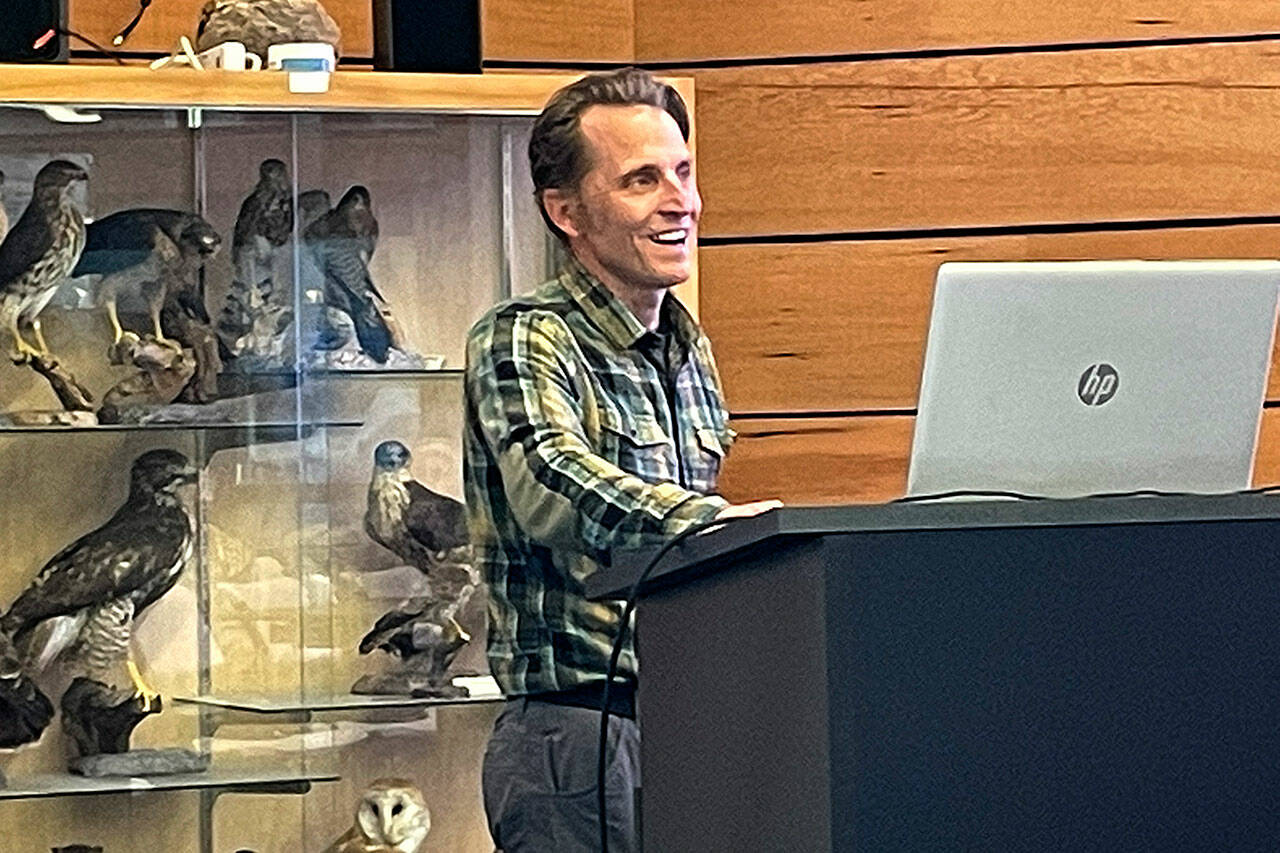European green crabs continue to creep inward in the Salish Sea as local resource managers remain on the lookout.
Staff with the state Department of Fish and Wildlife confirmed that four green crabs have been found recently in Nick’s Lagoon by Seabeck in Kitsap County.
State staffers report this is the first detection of green crabs in the Hood Canal, and farthest south confirmed in the Salish Sea.
“They don’t appear to be widespread, but are still cause for concern,” said Chase Gunnell, public affairs for the state Department of Fish and Wildlife, Puget Sound region.
The finding follows Gov. Jay Inslee’s emergency proclamation in January about green crab regarding increases in their populations along the ocean coastline, and in the Lummi Nation’s Sea Pond west of Bellingham — where more than 70,000 green crabs were captured.
Resource managers say the invasive species threatens native shellfish, eelgrass and estuary habitats across the globe.
Larvae can travel as far as of 100 kilometers, state officials said, and a female can release up to half a million larvae per brood at least once a year.
With the Kitsap County crab, Fish and Wildlife staff plan to conduct intensive trapping to determine the number of crab and attempt to eradicate them there.
This follows statewide efforts to develop cooperative agreements with local entities along Western Washington’s waterways, state officials said.
Clallam, Jefferson
Neil Harrington, environmental biologist for the Jamestown S’Klallam Tribe, said in a presentation on May 18 to the Olympic Peninsula Audubon Society that he hopes to work with Department of Fish and Wildlife staff to place upwards of 1,000 crab traps this year.
So far, he and a team with the tribe have placed 262 traps in March and April and caught one male green crab by the Tribal Center.
“If that number holds, I’ll be happy with that,” he said.
Last year, his team and Fish and Wildlife officials caught 16 green crabs in 758 traps.
Captures in Sequim Bay have been sporadic. One crab was captured in 2017 with 372 traps placed, and two more were caught in 2019 with 389 traps set.
Harrington said they’ve placed traps in Washington Harbor and Travis Spit but have not caught any green crabs there.
“We’re hoping they don’t get settled here,” he said.
At the Washington Maritime National Wildlife Refuge in Dungeness, Harrington told him that staff there have caught one male green crab in its base lagoon with 90 traps placed so far since April 1.
Green crabs were first detected in Dungeness in 2017 after years of monitoring with 96 green crabs caught.
Numbers there have remained relatively low, going as low as three captures in 2020 with 1,883 traps and up slightly last year to eight from 839 traps set.
Lorenz Sollmann, the refuge’s deputy project leader, previously said with the lower totals two years in a row they’d look to scale back in some of their efforts.
In May 2021, resource managers report Fish and Wildlife staff caught two green crabs at Bishop’s Point on Indian Island Naval Base May, but no others were found at other sites.
Dennis Cartwright of Kala Point said last week that volunteers there had not found any green crabs there this year.
That was a relief after finding one live crab at Kala Point three years ago.
“But since the Hood Canal discovery, we’re all on tenterhooks and thinking, are we next?” he said.
Emily Grason, Crab Team Program lead, also said East Jefferson County has had no green crab discoveries this year.
In Neah Bay, resource managers for the Makah Fisheries Management and Makah Tribe reported capturing 1,460 crabs in the Tsoo-Yess River, Wa’atch River and near Tsoo-Yess Beach. It was their most ever captured since trapping began in 2017.
State funding was put in place to support areas like Neah Bay with high green crab populations.
Gunnell said Thursday he lacked total numbers of green crab found recently Neah Bay.
State officials are in conversations with tribal co-managers and others about captures, he said.
Looking ahead, Harrington compares green crab to Scotch broom in that it may be around but not become the dominant species.
“It may be an ongoing maintenance thing,” he said.
Reporting
Resource managers say if you find a green crab, take a picture of it and report as soon as possible to crabteam@uw.edu.
State officials ask the public not to keep or kill suspected green crabs because they can be mistaken for native crabs.
For more information, visit wsg.washington.edu and wdfw.wa.gov/species-habitats/invasive.

